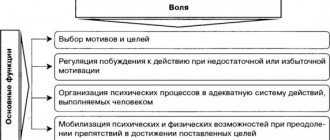To talk about sensations means to refer to the human body and all its nerve endings that help us get in touch with the world inside us and the world outside us.
Various types of sensations refer to the basic direct experiences caused by simple isolated stimuli. Sensation is also defined as the response of the sense organs to a stimulus. These are conscious captures of the properties of objects, things and phenomena.
Sensation is only the first stage of cognition, which through thought transforms data into ideas, concepts, laws, etc. And those, in turn, more deeply reflect the objective world and the accuracy of which is verified by practice. A sensation occurs when a stimulus impacts a receptor.
Although the concepts of sensation and perception are often used interchangeably, they differ in many details.
Sensation is the experience experienced by a stimulus in the form of a response to a sensory experiment, while perception is the interpretation of sensation that gives meaning and order.
Definition
Sensation is a spontaneous mental phenomenon that arises as a result of the direct influence of things of the objective world on the sense organs (analyzers) of animals and humans, an influence that is subjectively felt as the quality of the things themselves (red, cold, prickly, etc.). Sensation is secondary to material reality.
The term sensation has several meanings, for example it can refer to the impression that an object makes through the senses, that is, it becomes the immediate response of the sense organs when they receive a stimulus.
It also alludes to the surprise effect that people have when they are surprised by something or someone. Another definition refers to an intuition or feeling that an event or problem may occur to a person.
Sensation involves the optimal functioning of the senses and nervous system, and under normal conditions it results in what we can see, for example, red when it is red and green when it is green.
Characteristics and properties of sensations
- Characteristics:
- Sensation is an innate phenomenon . It has not been fully studied. You are born with the ability to receive sensations.
- The need for intensity or strength of sensation so that the stimulus is captured and its variations can be appreciated. The intensity of the sensation depends on the intensity of the stimulus. There is a difference in intensity that a stimulus requires in order for the subject to become aware of it. This is called a threshold.
- Duration: the time of constancy of sensation, that is, irritation of receptors. For example, auditory and visual sensations are short-lived, but painful sensations are long-lasting.
- The affective tone or state of mind of a subject, determined by the motives, expectations and experiences that he experiences and which influence both the predispositions and the ability to perceive, as well as the intensity of stimuli that must be captured and interpreted in the psychological field and they are individual.
- Sensational content: Content influences the perception of stimuli according to the relationships it has with motives, interests, expectations, and affective tone. We usually grasp with greater speed and intensity what interests us. And sometimes the same thing happens with what we think is going against us.
Properties of sensations:
Duration and spatial localization
The duration of sensations indicates how long they last. This characteristic is related to the intensity of the stimulus and the time of its exposure. The initial period of occurrence of the action of the stimulus is hidden: the stimulus has already begun to act, but the person has not yet felt it. In addition, after the cessation of the stimulus, the sensation persists for some time. This phenomenon in psychology is called the aftereffect.
Additional Information. The duration of the latent period varies among different types of receptors. For taste sensations it lasts 50 ms, for tactile sensations – 130 ms, for pain – 370 ms.
The spatial localization of sensations contains information about in which part of the body they occur. A person can easily determine the source of sound or light, and upon contact with a hot or cold object, he realizes the exact localization of the resulting cold or heat in the body.
Cold
Thus, the ability to sense provides a person with the opportunity to form a complete picture of the world around him. The ability to distinguish the smells and tastes of food makes it possible to eat healthy and enjoy eating; auditory and visual sensations are necessary for the acquisition of knowledge. In addition, receptor sensitivity contributes to the full functioning of the self-preservation instinct, sending information to the brain about approaching danger.
Functions and role
“Our brains evolved not to react to the world around us, but to predict what will happen to us next.”
Lisa Feldman Barrett
Scientists and researchers in the field of psychology of the last century pay due attention to the role and functions of sensations, since through them we understand the world inside and around us:
- Detection: The detection element in each sense is known as a receptor, which is a cell or group of cells that are particularly sensitive to a particular type of energy or more than one form of energy.
- Conversion and transmission: Receptors convert or convert energy from one form to another. Sensory receptors convert incoming energy into electrochemical signals that the nervous system uses to communicate.
- Transmission: If this energy is strong enough, it triggers nerve impulses that convey encoded information about various characteristics of the stimulus. Impulses travel along specific nerve fibers to specific areas of the brain.
- Stimulating and regulating information processing: Both the brain and receptors process sensory information: in organisms of relative simplicity, such as frogs, receptors do most of the work. In more complex animals, such as humans, the brain has a much greater workload.
Read more: Determinism in psychology
Classification of sensations
Types of sensations are divided into 3 main types:
But at different times, different scientists proposed their own classifications of sensations.
Wundt classification
Sherrington classification
Sherrington, based on the localization (location) of receptors, identified three main classes of sensations:
Head classification
G. Head believed that the correct division of sensations should occur according to their origin:
Classification by contact with irritant
Based on contact with the stimulus, sensations are divided into two types:
These sensations are intermodal and, therefore, can be considered multisensory.
Interoceptive sensations
Interoceptive sensations are stimuli emanating from internal organs.
It is the brain's representation of the body's own sensations, it is the sensory consequence of this activity, and it is fundamental to everything from thoughts, emotions, acceptance
decisions and our sense of self, to ensuring regulation of basic needs.
Simply put, interoceptive sensations (interoception) are the internal sensations of the body. We have receptors in organs, muscles and on the skin that provide us with various types of information that our brain then must integrate in order to have adequate performance (for example, while playing, getting dressed, at school, etc.).
Interoception allows us to sense our internal organs and gives us information about the internal state of our body, that is, informs us about pain, body temperature, itching, sexual arousal, hunger, thirst, heart rate, breathing rate, feeling drowsy or the desire to go to the bathroom . But in addition, interoception is the basis for identifying different emotional states, in a way that allows us to know whether we are calm or nervous, if we are ashamed, sad, afraid, etc.
Properties of sensations
All sensations can be characterized in terms of their properties. Moreover, the properties can be not only specific, but also common to all types of sensations. The main properties of sensations include: Quality, intensity, duration and spatial localization, absolute and relative thresholds of sensations.
It should be remembered that very often, when they talk about the quality of sensations, they mean the modality of the sensations, since it is the modality that reflects the main quality of the corresponding sensation.
The intensity of the sensation is its quantitative characteristic and depends on the strength of the current stimulus and the functional state of the receptor, which determines the degree of readiness of the receptor to perform its functions. For example, if you have a runny nose, the intensity of perceived odors may be distorted.
The duration of a sensation is a temporary property of a sensation. It is also determined by the functional state of the sensory organ, but mainly by the time of occurrence of the stimulus and its intensity. It should be noted that sensations have a so-called latent (hidden) period. When a stimulus acts on a sense organ, the sensation does not arise immediately, but after some time. The latent period of different types of sensations is different. For example, for tactile sensations it is 130 ms, for pain – 370 ms, and for taste – only 50 ms.
The sensation does not appear simultaneously with the onset of the stimulus and does not disappear simultaneously with the cessation of its effect. This inertia of sensations manifests itself in what is called the aftereffect. Visual sensations, for example, have a certain inertia and do not disappear immediately after the cessation of the stimulus that caused them. The trace of the stimulus remains in the form of a sequential image. There are positive and negative sequential images. The positive image of the sequence corresponds to the original stimulus and consists in the fact that the trace of the stimulus is preserved in the same quality as the actual stimulus.
A negative sequential image consists in the emergence of a quality of sensation that is opposite to the quality of the influencing stimulus. For example, light-darkness, heaviness-lightness, heat-cold, etc. The appearance of negative afterimages is explained by a decrease in the sensitivity of a particular receptor to a particular stimulus.
Finally, sensations are characterized by the spatial localization of the stimulus. The analysis carried out by the receptors gives us information about the localization of the stimulus in space, that is, we can tell where the light or heat comes from or what area of the body the stimulus affects.
All the properties described above reflect more or less pronounced qualitative characteristics of sensations. However, no less important are the quantitative parameters of the main characteristics of sensations - the degree (thresholds) of sensitivity.
It should be remembered that the same stimulus may be below the threshold for one person and above the threshold for another. The weaker the stimuli that a person can perceive, the higher his sensitivity. In other words, the lower the absolute sensitivity threshold, the higher the absolute sensitivity, and vice versa.
Thus, sensation is the simplest mental process of reflecting a separate quality (property) of an object under the direct influence of stimuli on the perceptual part of the analyzer.
Exteroceptive sensations
Exteroceptive sensations inform us about the external environment. These are the so-called superficial sensations. Receptors are located on the skin and mucous membranes. These are all kinds of sensations associated not only with touch, vision, smell, taste and hearing, but also with movement. Exteroceptive sensations are caused by external stimuli. External stimuli can act through direct contact or at a distance.
Visual sensations
We are talking about the sensations that arise when the subject observes something or someone. These sensations usually vary in their purity and brightness. Among them, there are colors that become more vibrant than others.
Read more: Emotional intelligence
Visual sensations also include:
Olfactory sensations:
Smell - The olfactory sensations are produced by volatile particles produced by the bodies from which they are released. There is a close connection between the sense of smell and taste. The nose is the organ of smell. Sometimes we don't perceive the taste of food well because of a cold.
Auditory sensations
These are sensations created by sound, so they are divided into sounds and noises. These sensations usually vary depending on height and tone. They also change depending on the timbre.
Tactile sensations
These sensations are created directly through the skin of a person, who can feel any element or object that touches him. Through the skin, one can feel when an object is rough, smooth, rough, regardless of whether it has thermal characteristics, i.e. hot, cold, warm, etc.
These sensations can also be caused by an internal process.
The sensations perceived by touch are of three types and are transmitted to the brain in different ways:
- Protopathic sensations. The most primitive and little differentiated, they react to the most powerful and extensive factors, such as pain, extreme cold or heat. They are the first to appear after nerve injuries.
- Epicritic sensations. The most subtle, localized and precisely allow us to recognize low intensity stimuli, allowing us to recognize shapes and sizes.
- Thermoalgesic sensations. Those associated with fever and pain.
Taste sensations
Through the sense of taste, we perceive the different aromas of things. They report the taste and chemical value of the material (sweet, sour, bitter). Their organ is located in the oral cavity, and their receptors are the taste buds of the tongue.
The stimuli for these sensations are substances in the liquid state. The function of saliva is to dissolve solids so that taste can be tested. For this reason, taste is considered a chemical sense, since it requires a liquid solution to stimulate it. Solids do not produce a sense of taste until they dissolve in liquids in the mouth.
Sensations and perceptions, their properties and types.
Sensation is a mental-cognitive process of reflecting individual properties of reality that directly affect a person at a given moment. The physiological basis of sensation is associated with the work of analyzers. Analyzers are channels through which a person receives information about reality. Analyzers consist of three parts: 1. Receptors (nerve endings) - a sensory organ (eyes, mouth, skin). 2. Nerve pathways through which nerve signals are transmitted to the brain. 3. Central cortical sections of the analyzers , where the “processing” of nerve signals coming from receptors occurs.
Properties of sensations : 1. The intensity of sensation is the degree of sensation experienced.
2. The duration of sensations is the length of time from the moment the stimulus begins to act until the moment the sensation occurs. 3. The latent period of sensation is the period of time from the moment the stimulus begins to act until the moment the sensation occurs. 4. The consequence of sensations is the period of time from the moment the stimulus ends until the sensation completely disappears.
Types of sensations: 1. Based on the form of the stimulus, the following types of sensations are distinguished : visual, auditory, olfactory, skin, gustatory. 2. By level of awareness : conscious, unconscious. 3. According to the location of the receptors: exteroceptive - reflect the properties of objects and phenomena of the external environment (visual, olfactory, gustatory, etc.); interoreceptive – reflect the state of internal organs (pain, sensations of balance, acceleration); propreoceptive - reflect the movement of our body (for example, muscle-motor sensations provide information about the position of the body in space, the movement of the body and its parts, contraction or stretching of muscles). Sensory impairment : color blindness, deafness, etc. Perception is a mental-cognitive process of reflection in the human mind, objects and phenomena of the real world in their integrity with a direct impact on the senses. Perception arises from sensation .
Properties of perception: 1. Selectivity of perception
-
the ability of a person to perceive only those objects that are of interest to him. 2.
Objectivity of perception –
perception is directed towards the object of reality. 3.
Integrity of perception -
perception gives a holistic image of the object .4. Constancy is the ability to maintain the constancy of certain properties of objects when conditions change. Types of perception: 1. Dependence on the modality of the stimulus (visual perception, gustatory, auditory); 2. Depending on the form of reflection: perception of space (shape, size), perception of time, perception of movement. 3. Depending on volitional efforts : voluntary, involuntary. 4. Impaired perception: autological - associated with a violation of the cerebral cortex (agnosia - difficulty recognizing objects), derealization - a person loses orientation;
situational disorders – illusions, hallucinations. The concept of the essence and functions of representations.
Representation is a mental-cognitive process of reflection in a person’s consciousness of objects of reality, the images of which have been preserved in a person thanks to his previous experience. Representation plays a significant role in the cognitive process, as it allows one to do without repeated experience and ensures the accumulation of information about the world.
The role of the representation is indicated by its functions:
1. The signal function tells us what object we may encounter (for example, a conditioned reflex to the word lemon). 2. Regulatory function – tuning the body to certain actions. 3. Adjustment function - forms a program of action based on previous experience.
Types of representations: 1. According to the modality of the stimulus - visual, auditory, motor, olfactory. 2. According to the degree of generalization - general and individual (general - generally reflecting a number of similar objects; individual - ideas based on the perception of one specific object). 3. According to the degree of volitional effort - voluntary and involuntary (involuntary - ideas that arise spontaneously, without activating the will and memory of a person).
Ideas are the basis of imagination and are closely related to thinking and speech.
Patterns
The properties and patterns of sensations emphasize the dependence and importance of analyzing systems in their work under the influence of stimuli.
Sensations arise only when the receptors change under the influence of movements in the surrounding world or the sense organs themselves.
Several patterns of sensations can be identified:
- Sensitivity thresholds
- Device
- Interaction.
- Sensitization.
- Contrast
- Synesthesia
Thresholds
Although the sensory stimuli may be the same, each person will perceive different things. On the other hand, sensitivity is determined by sensation thresholds, that is, by the intensity of stimuli with which we begin to perceive something. In this sense, three thresholds can be distinguished:
- Minimum threshold . This is the minimum or maximum level from which a person can experience a sensation. This is the barrier that separates stimuli that are detected from those that are not.
- Maximum threshold. When the sensation that a person experiences is so strong that it is not fully perceived.
- Differential threshold. This threshold represents the minimum difference that can be detected between two stimuli.
Read more: Motive
Adaptation
Adaptation is the adjustment of sensory abilities after prolonged exposure to stimuli. Environmental stimuli cause the sensitivity of sensory receptors to change depending on the type of environmental stimulus, thereby stimulating a specific receptor. Adaptation occurs when a person gets used to a stimulus and changes the coordinate system. Consequently, he does not react to the stimulus as well as before.
Interaction
Our sensations interact with each other. From the very beginning of perception, they are responsible for enhancing, empowering other senses, even competing with each other and causing surprising changes to each other. The sensory properties of the body are constantly changing. Therefore, a change in the sensitivity of some receptors under the influence of others is called the interaction of sensations. This combination of sensory information is necessary for the brain to build a picture of the outside world.
Contrast
Sensory contrast is the perception of an increased or increased difference between two stimuli or sensations (due to changes in the quality and intensity of sensations that occur under the influence of a preliminary or accompanying stimulus) when they are juxtaposed or when one immediately follows the other. An example is the effect that occurs when a trombone follows a violin or when the colors bright yellow and red are perceived simultaneously.
Or, if a sleeping person is pricked with a needle easily enough, he will not wake up. He will reflexively pull his leg away from the needle because his sensations are still retained, and his spinal reflexes will kick in, even though he does not perceive the sensation.
The thing is that instant cancellation of the action of the stimulating factor does not cause the same instant cancellation of stimulation processes in the receptors. This is a gradual process and not only does it take some time, but also several phases of excitation and inhibition of excited neurons must occur. Only then will the original sensitivity threshold be restored.
Synesthesia
People with synesthesia have a particularly curious cross-talk of senses and sensations, in which the activation of one sense spontaneously triggers the other. They may see colors when they hear noise, associate certain identities with days of the week, or hear sounds when they see moving dots.
This only proves to us the interconnection of all analytical systems of the human body.
Synesthesia is thought to be genetic, and recent research even suggests it may confer an evolutionary advantage.
Most synesthetes do not notice anything strange in the way they perceive their environment until it is brought to their attention.
The response to certain sensations sometimes depends not only on whether we feel, for example, an orange very sour or rich and sweet, which may be physical characteristics of the stimulus, but in other cases we may experience certain sensations from previous experience.
That is why through sensations we can accurately feel the world around us in all its splendor and in all its aspects.
Natalia Shakhova
Topic 18. Basic properties of sensations.
Quality of feeling
The characteristics of not only sensations, but all characteristics in general can be divided into qualitative and quantitative. For example, the title of a book or its author are qualitative characteristics; The weight of a book or its length is quantitative. The quality of a sensation is a property that characterizes the basic information displayed by a given sensation, distinguishing it from other sensations. We can say this: the quality of sensation is a property that cannot be measured using numbers or compared with some kind of numerical scale.
For visual sensation, quality can be the color of the perceived object. For taste or smell - the chemical characteristic of an object: sweet or sour, bitter or salty, floral smell, almond smell, hydrogen sulfide smell, etc.
Sometimes the quality of a sensation means its modality (auditory, visual or other). This also makes sense, since often in a practical or theoretical sense we have to talk about sensations in general. For example, during an experiment, a psychologist can ask the subject a general question: “Tell me about your feelings during...” And then modality will be one of the main properties of the described sensations.
Intensity of sensation
Perhaps the main quantitative characteristic of a sensation is its intensity. In fact, it matters a lot to us whether we listen to quiet or loud music, whether it is light in the room or whether we can barely see our hands.
It is important to understand that the intensity of the sensation depends on two factors, which can be designated as objective and subjective:
- the strength of the current stimulus (its physical characteristics),
- the functional state of the receptor on which a given stimulus acts.
The more significant the physical parameters of the stimulus, the more intense the sensation. For example, the higher the amplitude of a sound wave, the louder the sound appears to us. And the higher the sensitivity of the receptor, the more intense the sensation. For example, after being in a dark room for a long time and going out into a moderately lit room, you can become “blind” from the bright light.
Duration of sensation
The duration of sensation is another important characteristic of sensation. It, as the name suggests, indicates the duration of existence of the sensation that has arisen. Paradoxically, the duration of the sensation is also influenced by objective and subjective factors. The main factor, of course, is objective - the longer the effect of the stimulus, the longer the sensation. However, the duration of the sensation is influenced by both the functional state of the sensory organ and some of its inertia.
Suppose the intensity of a certain stimulus first gradually increases, then gradually decreases. For example, it could be a sound signal - from zero strength it increases until it is clearly audible, and then decreases again to zero strength. We do not hear a very weak signal - it is below the threshold of our perception. Therefore, in this example, the duration of the sensation will be less than the objective duration of the signal. Moreover, if our hearing has previously perceived strong sounds for a long period and has not yet had time to “move away”, then the duration of the sensation of a weak signal will be even shorter, because the perception threshold is high.
After the stimulus begins to influence the sense organ, the sensation does not arise immediately, but after some time. The latent period of different types of sensations is not the same. For tactile sensations - 130 ms, for pain - 370 ms, for taste - only 50 ms. The sensation does not appear simultaneously with the onset of the stimulus and does not disappear simultaneously with the cessation of its effect. This inertia of sensations manifests itself in the so-called aftereffect. The visual sensation, as is known, has some inertia and does not disappear immediately after the cessation of the action of the stimulus that caused it. The trace of the stimulus remains in the form of a consistent image.
Spatial localization of sensation
A person exists in space, and the stimuli that act on the senses are also located at certain points in space. Therefore, it is important not only to perceive the sensation, but also to spatially localize it. The analysis carried out by the receptors gives us information about the localization of the stimulus in space, that is, we can tell where the light comes from, the heat comes from, or what part of the body the stimulus affects.
Absolute threshold of sensation
The absolute threshold of sensation is those minimal physical characteristics of the stimulus from which sensation occurs. Stimuli whose strength is below the absolute threshold of sensation do not produce sensation. By the way, this does not mean at all that they do not have any effect on the body. Research by G.V. Gershuni has shown that sound stimulation below the threshold of sensation can cause changes in the electrical activity of the brain and even dilation of the pupil. The zone of influence of stimuli that do not cause sensations was called by G.V. Gershuni the “subsensory area.”
There is not only a lower absolute threshold, but also a so-called upper one - the value of the stimulus at which it ceases to be perceived adequately. Another name for the upper absolute threshold is the pain threshold, because when we overcome it we experience pain: pain in the eyes when the light is too bright, pain in the ears when the sound is too loud, etc. However, there are some physical characteristics of stimuli that are not related to the intensity of the stimulus. This is, for example, the frequency of sound. We perceive neither very low frequencies nor very high ones: the approximate range is from 20 to 20,000 Hz. However, ultrasound does not cause us pain.
Relative sensation threshold
The relative threshold of sensation is also an important characteristic. Can we tell the difference between the weight of a pound weight and a balloon? Can we tell the difference in the store between the weight of two sausage sticks that look the same? It is often more important to evaluate not the absolute characteristics of a sensation, but rather the relative ones. This kind of sensitivity is called relative, or difference.
It is used both to compare two different sensations and to determine changes in one sensation. Suppose we heard a musician play two notes on his instrument. Were the pitches of these notes the same? or different? Was one sound louder than the other? or wasn't it?
The relative threshold of a sensation is the minimum difference in the physical characteristic of a sensation that will be noticeable. It is interesting that for all types of sensation there is a general pattern: the relative threshold of sensation is proportional to the intensity of the sensation. For example, if you need to add three grams (no less) to a load of 100 grams in order to feel the difference, then to a load of 200 grams you will need to add six grams for the same purpose.
Studies have shown that for a particular analyzer this ratio of the relative threshold to the intensity of the stimulus is a constant.
For a visual analyzer this ratio is approximately 1/1000. For hearing - 1/10. For tactile - 1/30. Topic 19. The emergence and development of consciousness.
Structure of consciousness. Consciousness and unconsciousness. Human consciousness arose and developed during the social period of its existence, and the history of the formation of consciousness probably does not go beyond the framework of those several tens of thousands of years that we attribute to the history of human society. The main condition for the emergence and development of human consciousness is the joint productive instrumental activity of people mediated by speech. This is an activity that requires cooperation, communication and interaction between people. It involves the creation of a product that is recognized by all participants in joint activities as the goal of their cooperation. Individual consciousness at the dawn of human history probably arose (it is difficult to judge this now, after tens of thousands of years), in the process of collective activity as a necessary condition for its organization: after all, in order for people to do something together, each of them must clearly understand the purpose of their joint work. This goal must be stated, i.e. defined and expressed in words.
Consciousness and unconsciousness
Consciousness is not the only level at which mental processes, properties and states of a person are represented, and not everything that is perceived and controls a person’s behavior is actually realized by him. In addition to consciousness, a person also has an unconscious mind. These are those phenomena, processes, properties and states that, in their effect on behavior, are similar to conscious mental ones, but are not actually reflected by a person, i.e. are not realized. According to the tradition associated with conscious processes, they are also called mental.
The unconscious principle is one way or another represented in almost all mental processes, properties and states of a person. There are unconscious sensations, which include feelings of balance and proprioceptive (muscle) sensations. There are unconscious visual and auditory sensations that cause involuntary reflexive reactions in the visual and auditory central systems.
Dreams constitute a special category of the unconscious. The content of dreams, according to Freud, is associated with a person’s unconscious desires, feelings, intentions, and his unsatisfied or not fully satisfied important life needs.
Unconscious phenomena, together with preconscious ones, control behavior, although their functional roles are different. Consciousness controls the most complex forms of behavior that require constant attention and conscious control, and is activated in the following cases:
(a) when a person faces unexpected, intellectually complex problems that have no obvious solution,
(b) when a person needs to overcome physical or psychological resistance in the path of movement of thought or bodily organ,
(c) when it is necessary to realize and find a way out of any conflict situation that cannot be resolved by itself without a strong-willed decision,
(d) when a person unexpectedly finds himself in a situation that contains a potential threat to him if immediate action is not taken.
Situations of this kind arise in front of people almost continuously, therefore consciousness, as the highest level of mental regulation of behavior, is constantly present and functioning. Along with it, many behavioral acts are carried out at the level of pre- and unconscious regulation, so that in reality, many different levels of mental regulation are simultaneously involved in controlling behavior.










